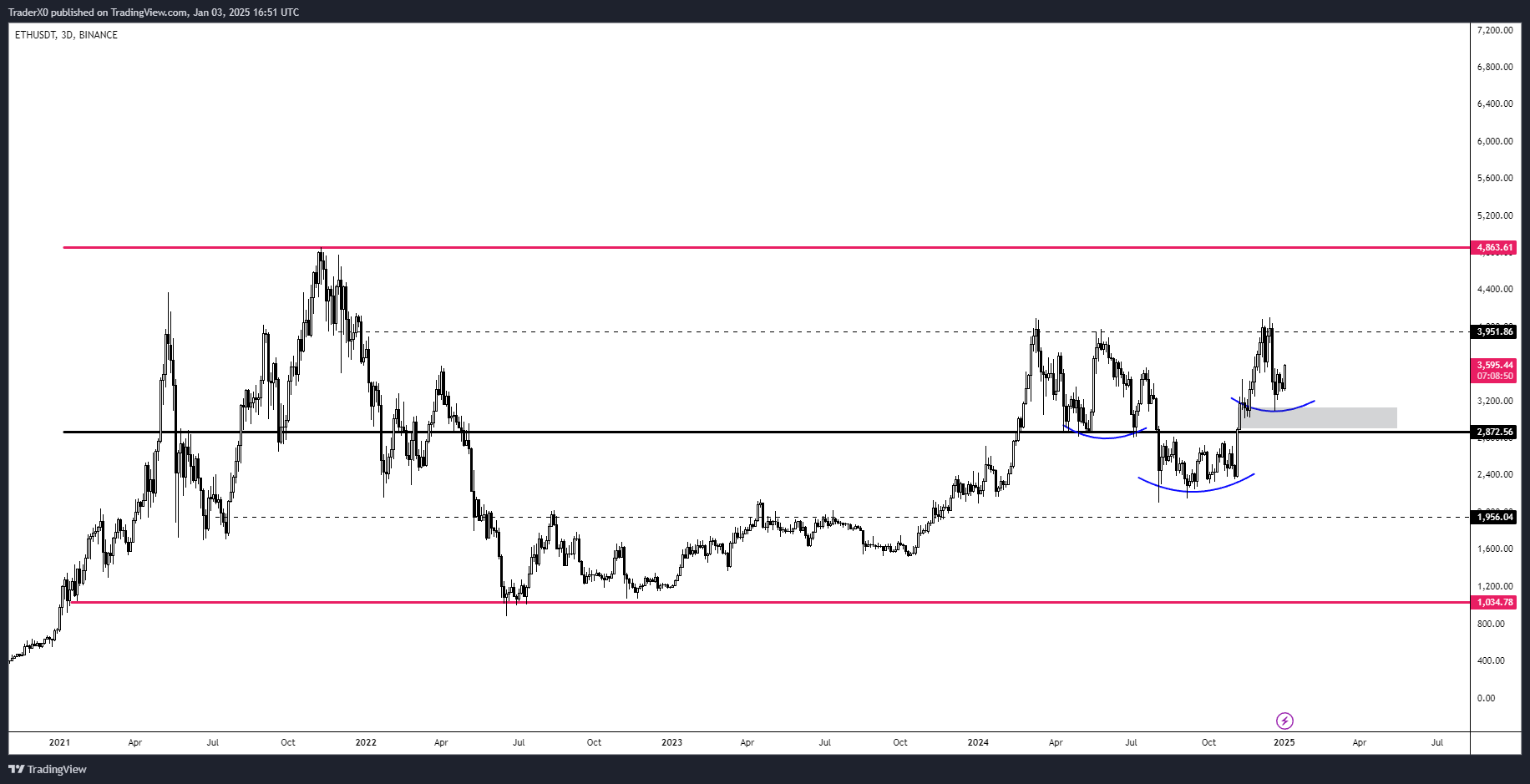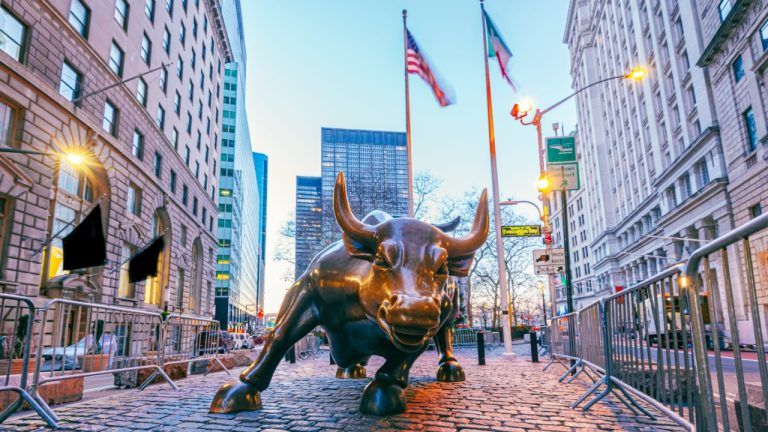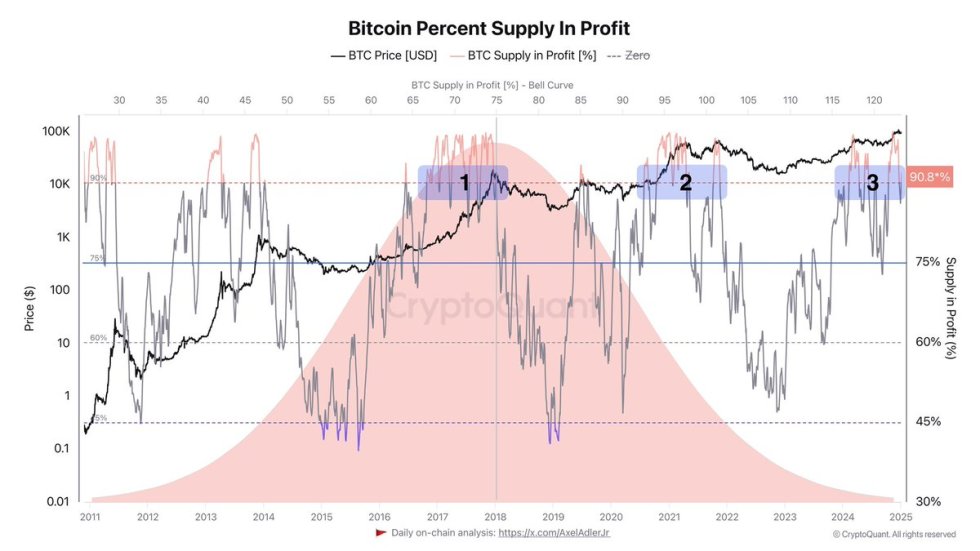<p>The past couple of years in crypto have been exceptionally turbulent, taking in new highs and new narratives to accompany them, along with crashes, collapses and prolonged grinds through market lows.</p><p> The fact that this wild ride has occurred when macro events seem to have tipped into a period of conflict and upheaval is no coincidence; current affairs and markets are intertwined, but the global background context adds to the sense of witnessing an especially volatile period.</p><p> All of which can lead one to look at Bitcoin and question what exactly happened to send prices surging to a 2021 double top, peaking at about $69,000 (having touched flash crash lows below $4,000 back in March 2020), only to then freefall back down to below $18,000 by early summer 2022, from which point signs of recovery have been repeatedly quashed.</p><p>What Drove the Bullishness of 2021?</p><p>One novel factor this time around was that due to the unprecedented measures implemented by governments around the world in response to covid-19, large swathes of the population found themselves spending substantial periods of 2021 indoors, and often in front of a computer.</p><p>At the same time, governments were printing money, and stimulus payments were finding their way to potential retail investors who had both the time and the inclination to explore risk-on trading and investment opportunities.</p><p> Coupled with this, there was, for some people, a sense of unease that perhaps the institutions in charge of the economy weren’t as reliable, responsible or forward-thinking as they had once believed, and that it might have been worth paying attention to alternative voices, such as those who had for some time been talking about <a href="https://www.financemagnates.com/tag/bitcoin/" target="_blank">Bitcoin</a>.</p><p> Around this point, we see the amplification of several narratives: that Bitcoin was a hedge against inflation (while money was being printed like never before), that Bitcoin enabled financial independence and general self-reliance (while governments were micromanaging citizens’ personal and business affairs in an abruptly authoritarian manner), and that <a href="https://www.financemagnates.com/tag/crypto/" target="_blank">cryptocurrencies</a> might have been the decentralized monetary progression required to enter a fully digital era (while Zoom and Amazon suddenly became ever-present, web-based conduits for our work and commercial needs).</p><p>We also had what appeared to be the beginnings of institutional Bitcoin adoption. A first Bitcoin futures ETF was approved in the US, MicroStrategy committed to using Bitcoin as its primary treasury reserve asset, while the Founder and then-CEO, Michael Saylor publicly advocated the case for Bitcoin, and a nation-state, El Salvador, enthusiastically adopted Bitcoin as legal tender.</p><p> It’s also worth noting the influence of the book The Bitcoin Standard, by Saifedean Ammous, which laid out the case for Bitcoin in a comprehensive manner that adeptly balanced academic and accessible tones.</p><p>Crashing the Party</p><p>Post-peak, events have unravelled almost as quickly as they tied together in the first place. Cheap cash and stimulus checks cannot be extended for long without doing substantial economic damage, and, inevitably, the hangover after the printing party is out-of-hand levels of inflation.</p><p> Cue rising interest rates, <a href="https://www.financemagnates.com/terms/e/equities/" target="_blank" id="d6e02698-4c6b-44dd-ab57-9ff12763325c_1" class="terms__main-term">equities</a> taking a hit, and the narrative by which Bitcoin is an inflation hedge falling at the first hurdle. In fact, Bitcoin is, at the present moment, behaving similarly to a high beta stock, and so when equities fall, Bitcoin dumps harder.</p><p>With a switch from bullish to bearish trends, and the catastrophic collapse of Terra Luna, the precariousness of several recklessly over-leveraged crypto organizations was revealed, and we witnessed market contagion taking out several major players, including Celsius and Three Arrows Capital.</p><p> Throughout the commotion, MicroStrategy has stood firm, and the indications are that Michael Saylor’s conviction in Bitcoin is deeply held. However, if expectations for this cycle were that other corporations would follow in MicroStrategy’s trail, then they have not materialized.</p><p> Prior to economic conditions hitting the inevitable, post-stimulus brick wall, 2021 saw some other events working against Bitcoin. Elon Musk was pro-Bitcoin at the start of the year when Tesla bought $1.5 billion worth of the digital asset and announced that it would accept Bitcoin payments, but then in May, Tesla executed a U-turn on those Bitcoin payments, citing environmental concerns. In the same month, China restricted Bitcoin mining in September and banned all crypto trading.</p><p> In 2022, even as covid-related turmoil retreated in the rearview mirror, we saw the outbreak of war in Ukraine, and ominous energy crises sliding into view. With Bitcoin’s price now hitched to equities, these news events and their negative impact on prices have further undermined claims that Bitcoin was ready to decouple and operate as a safe-haven store of value.</p><p>The Halving Cycle Plays Out</p><p>Further ecosystem quakes and macro shocks are possible, along with continued drops in price, and the economic headwinds are still blowing. However, it should be emphasized that Bitcoin is weathering the storm.</p><p> One of the key advantages that Bitcoin has over competitor blockchains is that it is battle-hardened, and every event of this current cycle has only caused it to become better stress-tested, more impervious and more antifragile.</p><p>The narratives around Bitcoin are still in play, that it is not a tech stock, that it is sound money, and that it is uniquely capable of functioning as a digital inflation hedge, store of value and working currency, but these are long-term functions that are still to unfold.</p><p> There is one additional peculiarity to this story, which is the persistent correlation between crypto fluctuations and Bitcoin’s four-year <a href="https://www.financemagnates.com/terms/h/halving/" target="_blank" id="4334a48f-5b44-4f38-9d1f-c304dfdd6c40_2" class="terms__secondary-term">halving</a> cycles. According to these observable, cyclical trends, Bitcoin, despite all the chaos, has performed exactly as should have been expected.</p><p> In fact, if you only followed cycle trends and had known absolutely nothing of the news (crypto, financial, or in general) in 2021 and 2022, you could still have accurately predicted that Bitcoin would peak in late 2021 and then crash hard in 2022.</p><p> It can, at first sight, seem strange that the influence of external current affairs appears to synchronize with forecasted price patterns stemming from Bitcoin’s internal protocols, but nonetheless, for now, at least, the established cycles still hold.</p>
This article was written by Sam White at www.financemagnates.com.

You can get bonuses upto $100 FREE BONUS when you:
💰 Install these recommended apps:
💲 SocialGood - 100% Crypto Back on Everyday Shopping
💲 xPortal - The DeFi For The Next Billion
💲 CryptoTab Browser - Lightweight, fast, and ready to mine!
💰 Register on these recommended exchanges:
🟡 Binance🟡 Bitfinex🟡 Bitmart🟡 Bittrex🟡 Bitget
🟡 CoinEx🟡 Crypto.com🟡 Gate.io🟡 Huobi🟡 Kucoin.





















Comments